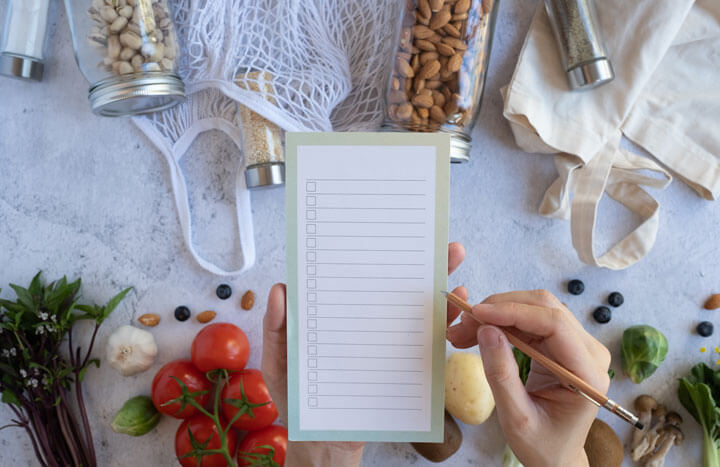
Throwing away edible food doesn’t just waste money, it is sent to landfills where it rots and produces methane gas, which is the second most common greenhouse gas. In other words, throwing out your food contributes to climate change.
You can help reduce your food waste by following the easy tips in this article. Every little bit helps.
Know the difference between ‘use by’ and ‘best before’ dates
A ‘use by’ date on a product is there for food safety reasons. You can eat it right up to the ‘use by’ date, but not after. ‘Best before’ dates mean that it may just no longer be at its best but should still be safe to eat (as long as it’s not past the ‘use by’ date).
Using your fridge and freezer efficiently
The fuller a freezer is, the more energy efficient it runs, so freezing food not only stops food going to waste, it can also save on your electric bill. Having your fridge at the right temperature (between 0°C and 5°C) can help preserve food for longer too. Just remember to keep organised and put older food to the front or top, try thinking FIFO – first in, first out.
Swap fresh food for frozen
Buying frozen food means that you can use as much or as little as you like without the rest of the pack going past its best. Not only does it allow you to have more fruit and veg on hand when you need it, it can also help you save money and bulk buying frozen food is often cheaper than fresh, without compromising on quality, taste, or nutrition.
Store food correctly
The Natural Resource Defence Council report that about two-thirds of household waste in the UK is due to food spoilage because people are unsure of how to store fruit and veg which can lead to premature ripening and rotten produce. Tomatoes, potatoes, onions and cucumbers shouldn’t be put in the fridge, but kept at room temperature.
Some foods affect others whilst ripening as well; bananas, tomatoes, pears are amongst some of these and should be kept away from potatoes, apples, greens, berries and peppers!
Learn to preserve
As the Autumn descends on us, why not take up a new hobby like pickling? It can reduce your carbon footprint, save money and making it can be fun.
Save leftovers
Bag them, mark them up with the date and reuse! There are recipes for meals such as casseroles which were made for leftover meat and veg. Even taking them in your lunch pack-up reduces waste, costs and your carbon footprint.
Try not to throw food away
Just because food has gone a bit brown or you think the shape’s a bit weird, doesn’t mean you need to throw it away – wonky is in vogue after all – right?! Think about other ways of using items, for instance over ripe bananas are great for making banana bread. There’s plenty of other things you can use bits of older fruit and veg for like:
- Using potato peels to make chips or soup
- Popping an orange peel in a water bottle to add flavour
- Using tiny bits of veg to top homemade pizzas
- Smoothies
What is completing?
‘Completing’ means eating the whole ingredient or food and not letting any of it go to waste. You can get the best value from the food you buy, by saving yourself the hassle of peeling whilst unlocking a whole load of flavour potential and nutrients. To find out more, visit: https://www.lovefoodhatewaste.com
Composting if you can
If after you have explored all of the above but you do have waste food, try composting which is a beneficial way to turn food waste into energy for plants
By thinking more about the food your household wastes every day, you can help create positive change. Even minimal changes to the way you shop, cook and consume food will help reduce your impact on the environment and it doesn’t have to be difficult. With a small amount of effort, you can cut your food waste dramatically, save money and time, and help take some pressure off Mother Nature.



